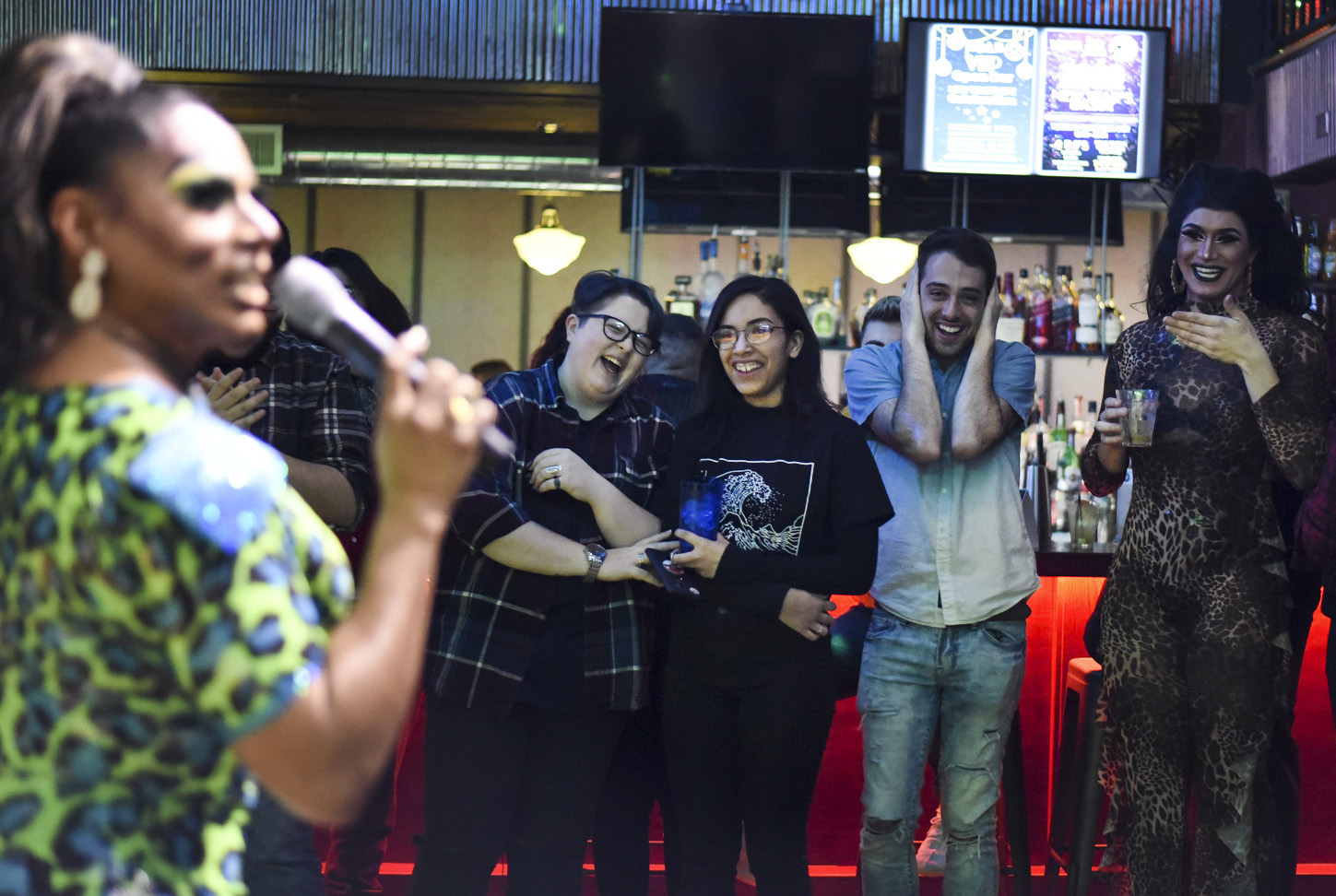Note from the Editor: For the purposes of this piece, "gay" is used to refer to the LGBTQ+ community.
I remember growing up never hearing of drag, as gay culture was subdued and unspoken. Drag queens now star in Netflix series, walk the red carpet at the Met Gala and top the Billboard charts.
With drag's showmanship and skyrocketing popularity, so many drag artists have become bonafide celebrities. This level of exposure brings drag and gay culture into the mainstream. Yet, even in Rochester, drag thrives — and there’s much more to that community than big wigs and lip syncs.
DeeDee Dubois
David Chappius was closeted throughout high school — never publicly admitting he was gay. It wasn't until college, as he and his friends frequented various clubs, that he was first inspired by the drag world.
He befriended drag performers and found a place where he could be himself. Before long, he began painting his face and getting into drag. And so drag queen DeeDee Dubois was born.
“It was a perfect fit for me because I always wanted to be the center of attention,” Dubois said. “And so drag helped me be that.”
“When I got into drag, I could be a character."
For Dubois and many others, drag has offered an escape — not into a fantasy, but out of one.
"When I got into drag, I could be a character,” Dubois explained. “I didn’t have to be shy. I could be outgoing; I could be sexual; I was funny. And from that point on it just flourished.”
Guidance and Acceptance
Dubois has been performing for 22 years, beginning her career at only 18. When she first started, drag was still very much a subculture of a subculture — a grimy gem hidden within the gay world. To get a solid start, you often needed some guidance from more experienced queens.
Rochester is home to many drag stars such as Aggy Dune, Darienne Lake and Ambrosia Salad. However, much of the guidance Dubois received was from her drag mother, Helena Troy.
From Troy, Dubois picked up tips and tricks that shaped her into the performer and Rochester icon she is today. Figures like Troy taught Dubois and other budding performers things that may seem simple to a modern queen, such as where to purchase supplies.
"Back when I started, you couldn't go to Amazon to buy heels," Dubois said. "There weren't stripper stores online to buy your heels and dance tights."
This extended to makeup, as well. Before the YouTube era, queens learned makeup skills from other queens. There were no tutorials for them online. As for those tights? Dance shops.
“Parents [were] taking their little 10-year-old girls to get their ballerina outfits,” Dubois said. “I had to walk into [these shops] as a 20-year-old man and try to order 3X dance tights as they’re looking at me like I have some weird fetish in my basement.”
Now, as a more seasoned queen, Dubois returns the favor. While she's only taken one drag daughter — Destiny Spice — she’s never held back advice, pointing many in the right direction and giving tips where she can.
Dubois was the longtime host of Tilt Nightclub’s Wild College Party, which gave up-and-coming college queens a chance to be in the spotlight. Since Tilt’s closure, Dubois has continued to foster the drag community, making a home for queer youth at her own bar, Roar — the only major venue in Rochester that is open to those 18 and older.
Kyla Minx
Houston native Jonathan Jordan would also grow to become a prominent local queen. She came to Rochester to study psychology at SUNY Brockport, graduating in 2004. Much like Dubois, she became engrossed in drag culture at the age of 18. Taking her name from Kylie Minogue, Jordan became Kyla Minx.
Minx has two drag mothers, the previously mentioned Destiny Spice and longtime Rochester star Samantha Vega.
Many other drag artists also influenced Minx. She was inspired by the stylistic aesthetic of Danae, a former Rochesterian queen from Minx’s early days in drag. From Pandora Boxx, she inherited her first hosting gig — branding it “Kyla Minx’s Chicken'n'Waffles.” Minx has grown to become a Rochester staple through the support of fellow queens.
Inclusivity in the Community
In her 19 years on the circuit, Minx has seen growth in the community as gay culture became more widely accepted. But she is determined to further this growth.
“You’re seeing where, especially among white LGBT folks, they don’t get the need for inclusivity, not [solely] equality. They don’t understand the difference,” she said. “You’re seeing the divide between LGB folks and Trans people.”
"You’re seeing where they don’t get the need for inclusivity."
Minx explained that, while the gay community is moving in the right direction, it hasn’t quite reached the finish line.
“We do a pretty good job of reacting in the proper way [to pressing LGBT issues],” she said. “We do ... the right things, but we don’t always continue it past [that]."
She continued, saying that members of the gay community often don't change their behaviors when needed. However, Minx still acknowledged that Rochester's community members are very active and supportive of one another, despite the size.
Ever Forward
Neither Dubois nor Minx are ready to rest on their laurels just yet, though. Dubois continues to build and foster Rochester drag through providing a welcoming environment at her bar. Minx, on the other hand, is setting her eyes on her own success, hoping to break onto the national stage.
Both still see Rochester as home, though, and likely will continue to for some time. Rochester has given birth to these two stunning queens, as it has to so many others and more to come.
These communities aren’t built by themselves, however. It’s upon the labor of figures like these that a sense of true community is born.
As Dubois quipped, “I’m tired as fuck but I couldn’t be happier.”








